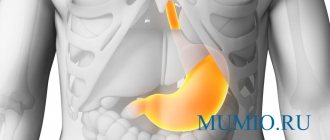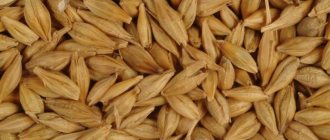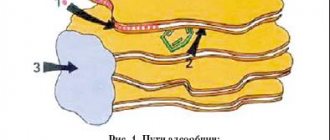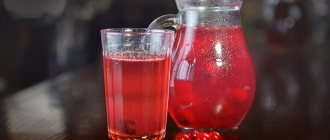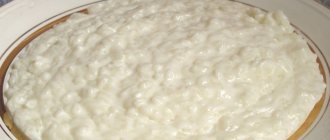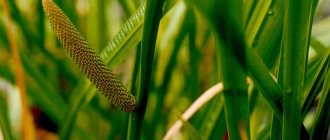Celandine grows in the European part of Russia, in the Caucasus; its variety with more elongated leaves is also found in Siberia. The doctors of Ancient Greece knew about its medicinal properties of this herb. The plant was used to cleanse the blood and treat eye diseases. In Rus', this herb was called warthog, swallow grass, clean grass, yellow grass and witch grass. They applied it to warts, freckles, bathed children in it, and even treated lupus with it.
In botany, celandine is defined as a perennial poisonous plant of the Poppy family, up to 80 cm tall, with bright yellow flowers and milky orange juice. The flowering period of the plant begins in spring and continues until autumn. In the southern regions it can bear fruit several times during the summer. Ants love to eat the black, shiny, oily seeds of celandine; they are also their carriers.
For medicinal purposes, the grass, juice and roots of celandine are used, but flowers are also used in Tibetan medicine. Cut the plant at the beginning of flowering with a sickle, scythe or pruning shears to preserve the juice. The cut grass is dried in a thin layer in the attic or under sheds with good ventilation. The plant is periodically turned over, and readiness is determined by the crunch. When packaging raw materials, use masks, as its dust can irritate the nasal mucosa. Dry grass is stored for no more than 3 years.
Celandine - what kind of plant?
Celandine is a perennial from the poppy family. You can easily recognize it by its fleshy stem, which often reaches 1 meter in height. The leaves are pinnate, the upper part is bright green, and the lower part is painted in an inconspicuous bluish color.
Celandine begins to bloom in summer, but in warm weather the first flowers may appear as early as May. They have a bright yellow tint and are located at the very end of the stem. It is not difficult to understand that it is celandine in front of you. If you break the stem of the plant, you will certainly see orange juice. In addition, the natural healer grows everywhere.
Celandine is sold in dry form at any pharmacy, but it is advisable to prepare the plant for future use with your own hands. Any person can do this task. During the flowering period, the plants are collected, washed and finely chopped. A dry room is suitable for drying. If you have a dryer, that will also come in handy. Recommended temperature is 50 degrees.
It is not difficult to determine that the celandine has dried sufficiently and is ready for use. It is enough to break the stem. A slight crunch will indicate that the raw material is dry. And if the plant bends, but breaks with difficulty or does not break at all, wait a few days. The finished potion is placed in a fabric bag and stored in a dark place in a suspended state.
Symptoms of polyps in the uterus
The main signs of polypous growths are:
- spotting at the end of sexual intercourse of varying intensity;
- bleeding;
- nagging pain in the lower abdomen, above the pubis;
- intense menstruation, and, as a result, signs of anemia - pale skin, general weakness, shortness of breath, dizziness.
Often, polyps occur without any external signs and are an accidental “find” during a routine examination.
Signs of polyp formation
Healing composition
Those who have repeatedly heard about the “dark side” of the plant are interested: is it possible to drink celandine for gastritis? The “dark side” is the poison contained in the juice. All parts, without exception, are considered poisonous. Taking juice in its pure form is prohibited, especially when it comes to pathologies of the digestive system.
If a doctor has prescribed celandine for gastritis with high acidity, it is important not to exceed the dosage. Old plants contain the most toxic substances; the effect of young ones is much milder.
The chemical composition of celandine is very rich and varied:
- Alkaloids - more than 20. They are directly involved in the treatment of ailments, but in large doses they act as poison.
- Essential oils. Relieve inflammation and effectively fight spasms. The antimicrobial effect of essential oils is also excellent.
- Amines. The former help reduce blood pressure, the latter have a good diuretic effect.
- Flavonoids. Thanks to them, the immune system is activated. The body fights viruses much more effectively. In addition, flavonoids reduce the risk of developing cancer. Just like essential oils, they relieve cramps.
- Organic acids. They are directly involved in metabolism.
Medicinal properties of celandine
The healing properties of celandine are explained by its composition. Most of the chemical compounds are concentrated in the roots of the plant, and the nutrients in the young grass. This is explained by the fact that celandine is less poisonous at the beginning of flowering, and therefore more suitable for treatment.
The entire plant contains more than two dozen alkaloids that are complex in structure, 5 of which are very dangerous. In grass their amount does not exceed 2%, and in roots it can reach 4%. For example, the alkaloid berberine inhibits the accumulation of cholesterol in the cells that create arteriosclerotic plaques and, according to a number of studies, has an anticancer effect in certain types of cancer. Chelidonine has an antispasmodic effect, reduces heart rate and blood pressure, while the alkaloid homochelidonine, on the contrary, has the opposite effect.
Celandine also contains saponins, essential oils, flavonoids, beta-carotene, malic, citric, succinic and ascorbic acids - they have antiviral, antitumor and antioxidant properties. Thanks to this composition, celandine preparations affect the growth of malignant tumors at an early stage and have an antifungal and antibacterial effect on mycobacterium tuberculosis.
Good to know
What do you need to know about medicinal plants for them to be beneficial?
Today, celandine is used to treat many skin diseases, including psoriasis and itchy dermatoses. Externally, they cauterize warts and treat hard-to-heal wounds, including skin tuberculosis. The plant is taken internally for diseases of the liver, gall bladder and stomach ulcers, as the herb has choleretic, antispasmodic and anti-inflammatory properties. With the help of celandine juice, you can get rid of polyps, sinusitis or toothache; if you add the juice to shampoo or conditioner, you will get an effective remedy for dandruff and seborrhea.
In Soviet homeopathy, the herb, roots and juice of celandine were used. Decoctions from the roots were drunk for dysentery, jaundice, gout, they achieved a diuretic effect and were used as an anesthetic for wounds and skin ulcers. Domestic medicine includes celandine as the main component in medicinal preparations for diseases of the liver, gall bladder and the treatment of gout.
Despite the wide range of healing properties, celandine can only be used as prescribed by a doctor.
Ready-made celandine can be purchased in the following form:
- celandine grass;
- celandine grass in filter bags;
- tincture of celandine;
- celandine juice;
- celandine cosmetic oil;
- candles with celandine.
show more
The role of celandine in the treatment of gastritis
Traditional healers recommend celandine as an effective, proven remedy that has proven itself in the treatment of gastrointestinal ailments. However, not a single celandine tincture can be consumed without first consulting a doctor. Remember that some substances in the plant can act as poison if the dosage is exceeded. Treatment of gastritis always begins with minimal dosages and carefully monitors the body’s reaction to a particular drug.
In addition to tinctures, celandine can be used in combination with other medicinal plants. The procedure remains the same. Before drinking the decoction, you need to:
- Consult your doctor.
- Study contraindications. This is extremely important when the patient has other diseases.
Celandine for intestinal cancer
A very serious and difficult to treat disease - intestinal cancer - is not always amenable to drug and therapeutic treatment, so many resort to herbal medicine. With this type of cancer, celandine performs the following functions:
- Reduced pain;
- Relieving intestinal muscle spasms;
- Destructive effect on foreign tumor cells;
- Restoration of microflora and affected tissue areas.
Celandine is used as alcohol and water tinctures and decoctions. The alcohol version has a longer shelf life and is acceptable in the absence of various stomach diseases.
About celandine - in a thematic video:
Effective tincture recipes
In case of exacerbation, a tincture of celandine with the addition of 4 other medicinal herbs will help. To prepare a healing mixture, two tablespoons of lingonberry leaves, the same amount of dry celandine, leaves, and flax seeds are mixed in one container. You will need a little more oregano - 3 tbsp. Then take 2 tbsp. l. ready collection, pour 0.6 liters. boiling water in a thermos, leave to infuse overnight. Then the infusion is filtered and 200 ml is drunk. on an empty stomach before breakfast, lunch and dinner. The course of treatment for the disease is 2 weeks.
For erosive gastritis and high acidity, you can use another healing mixture. But remember that each of the herbs included in its composition has its own contraindications. For example, St. John's wort is not recommended for women who are breastfeeding or pregnant, and is contraindicated in severe forms of hypertension and the use of oral contraceptives. Children are not treated with St. John's wort.
How is the medicinal infusion prepared? The following herbs are mixed in one container:
- Celandine – 2 tbsp. l.
- Chamomile – 2 tbsp. l.
- St. John's wort – 6 tbsp. l.
- Yarrow – 4 tbsp. l.
All herbs are poured with boiling water and infused for 2 hours. Duration of use – maximum 3 weeks, order – 0.5 cups every morning before breakfast.
What is a polyp in the uterus
A uterine polyp is a benign space-occupying formation that forms in the uterine cavity against the background of local hyperplasia of cells in the growth layer of the endometrium. The pathology can affect patients of different age groups. Detectability is approximately 6-20%.
The sizes of endometrial polyps range from 1-2 millimeters to several centimeters.
The formation is attached to the uterine wall through a thin stalk or a wide base. Nutrition is provided by a vessel in the center of the polyp. Pathological structures can be either single or multiple. When several formations are detected, they speak of polyposis. Polyps can cause intermenstrual bleeding, abdominal pain, and problems with conception. Usually pathology is diagnosed during ultrasound. In gynecology, polyps are considered potentially malignant formations that need to be removed surgically.
Polyps by type of attachment
How is gastritis treated with celandine juice?
To cure atrophic gastritis, healers also recommend celandine. Since it is impossible to drink in its pure form (the reasons for the ban were discussed above), celandine is diluted with honey. 50 ml of juice is mixed with 200 ml of natural honey. The sweet medicine is drunk three times a day on an empty stomach, the course duration is seven days. The first day starts with a teaspoon, then the dosage is increased to a tablespoon.
What to do if a patient has gastritis with low acidity? Alcohol tincture comes to the rescue. To prepare it, take juice and vodka and mix them in a 1:2 ratio. Infuse for a day, store in a cool place - for example, in the refrigerator. After a 7-day course, take a 14-day break. The recommended dosage is a tablespoon half an hour before meals.
Kvass prepared according to Bolotov is considered very useful. You will need three liters of whey, a glass of celandine. Both dry and fresh grass, which is pre-chopped, are suitable.
- The serum is poured into a jar with a gauze bag previously placed there. Celandine or some small pebble is used as a load.
- Cover the jar with gauze and place it in a warm place. This is necessary for the fermentation processes to begin.
- After 2 weeks, the bag is removed. Drink the finished drink 1/2 glass once a day before meals. Course duration is 7 or 14 days. This recipe is very effective because it contains healing lactic acid bacteria.
Herbal milkshake
This remedy is highly effective, and, moreover, has far fewer possible side effects. A light decoction is made from celandine, which is mixed with milk.
- 240 ml low-fat milk;
- 1 tbsp. a spoonful of dry celandine;
- 240 ml water.
Celandine must be poured with boiling water and boiled for 15-20 seconds, then cool the liquid and add 1 large spoon to the milk.
Who should not be treated with celandine?
Celandine is a poisonous perennial. Therefore, any medication taken orally is impossible without first consulting a doctor and strictly following the recommended dosage. The duration of treatment is 2 weeks, no more.
We have already said that celandine should not be drunk by pregnant women, during lactation, as well as by children under 12 years of age or by hypertensive patients. Other contraindications include:
- Bronchial asthma.
- Dysbacteriosis.
- Chronic form of constipation.
- Angina pectoris.
- Mental illnesses.
Even with a small overdose, dizziness, vomiting, and attacks of weakness are possible. Convulsions, and in some cases even the death of the patient from suffocation, cannot be ruled out. Celandine tinctures should not be drunk for too long. This can lead to liver damage, severe nausea and severe constipation.
Reviews from doctors about celandine
Svetlana Barnaulova, PhD, cardiologist of the highest category, herbalist:
– Without a doubt, the main areas of use of celandine are inflammation, allergies and oncology. It is combined in collections for the treatment of sinusitis, bronchitis, bronchial asthma, pneumonia with other desensitizing and anti-inflammatory plants, for example, string and wild rosemary. The anti-oncological properties of celandine are well described; the plant is used, for example, in preparations to prevent metastasis during surgical treatment.
How to determine stomach acidity with atrophic gastritis
As you know, the main element of gastric juice is hydrochloric acid, without which it is in principle impossible to completely digest food entering the stomach.
The concentration of hydrochloric acid in the structure of gastric juice is determined relative to the acidity coefficient. As evidenced by expert reviews, direct damage to the body is caused by indicators of both excess and low acidity.
Gastritis with low acidity
Symptoms of gastritis with low acidity
Experts note that gastritis with reduced acidity is formed as a result of atrophy of the gastric mucosa. The immediate severity of the disease depends on the area covered by the atrophic process. The human body consists of cells, and the stomach in this case is no exception. Atrophy, in turn, contributes to the modification of these cells, which are responsible for the normal functioning of the stomach. As a result of atrophic processes in the body, existing cells begin the process of dying, therefore, they can no longer produce acid, which contributes to the direct digestion of food. Regarding the level of complexity, there are types:
- With moderate and reduced secretion.
- Zero acidity.
The immediate causes of the formation of gastritis with a slight degree of acidity can be both internal and external factors. Atrophic gastritis with low acidity is formed when Helicobacter enters the body. It should be noted that with atrophic gastritis, no matter the acidity, the stomach is affected in such a way that it simply cannot resist the bacteria. The most common causes of such processes in the body are a number of factors:
- Non-compliance or systematic violation of the diet.
- Excessive consumption of hot, spicy, hard foods.
- Impaired blood circulation as a result of heart disease.
- Alcohol abuse.
- A deficiency of incoming oxygen, which can occur during the formation of lung diseases.
- Metabolic disorder.
- Gastrointestinal diseases.
- Endocrine diseases.
- Hereditary predisposition.
- Protracted contagious illnesses.
Typically, any factor can affect a direct decrease in acidity in atrophic gastritis. In addition to this, disturbances in the motor function of the gastrointestinal tract may appear. As a result, the immediate contents of the duodenum are reversed into the stomach, which has a destructive effect on the walls of the stomach.
Symptoms of atrophic gastritis
Causes of atrophic gastritis of the stomach
Atrophic gastritis with low acidity levels has general and system-forming symptoms. This is primarily due to the fact that with cell necrosis, the ability to absorb substances valuable to the body is lost. As a rule, over time, such modifications in the body lead to a significant deterioration in a person’s condition, while disrupting the vitamin-mineral hormonal balance.
As a rule, at the initial stage of development of atrophic gastritis with a low level of acidity, it practically does not bring any discomfort to the patient. And such minor signs as gas formation and slight loss of appetite do not attract attention. As the disease develops and worsens, the existing symptoms manifest themselves increasingly, while causing the person severe discomfort.
Signs include:
- Feeling of heaviness and fullness after eating. As a rule, such sensations are complemented by dull painful sensations.
- A feeling of nausea that occurs immediately after eating.
- Sometimes vomiting may occur.
- Lack of appetite, which leads to sudden weight loss. In severe forms of the disease, exhaustion of the body occurs.
- Belching or regurgitation of consumed food.
- Stool disorder.
- Violation of metabolic processes.
- Constant gurgling in the stomach.
- You can see a grayish coating on the tongue. As a rule, the alignment of its papillae occurs.
General symptoms include:
- Apathy, excessive irritability, overwork.
- Apathy.
- Pale and dry epidermis.
- Hair loss.
Types of prolonged atrophic gastritis
Chronic gastritis of the stomach with low acidity
As a rule, there are terms that characterize mucosal atrophy. The direct concept of atrophic gastritis refers to its protracted course, which is accompanied by stages of worsening and remission. The acute form contributes to pronounced inflammation and swelling of the walls of the stomach, congestion of blood vessels. This type of disease is often called “active gastritis”, the symptoms of which are similar to the manifestation of superficial inflammation of the stomach. This form of gastritis is a severe form of the disease and is characterized by pronounced symptoms. The main features include:
- Intense painful sensations.
- Vomit.
- Constipation.
- Rising temperature.
- Coma.
Sometimes the acute form of the disease is fatal. The death is facilitated by joint intoxication of the patient’s body and cardiac arrest. Chronic atrophic gastritis is an independent type of disease. Consequently, the opinion that the protracted form of atrophic gastritis occurs as a consequence of acute gastritis is erroneous. Experts often call this form of the disease “inactive gastritis.” This type of disease has a long and sluggish course, and, characteristically, can develop for several years. The signs are:
- Thinning of the stomach walls.
- Smoothing of the mucous membrane.
- Large ulcerative depressions.
- Consolidation of the epithelium.
- Low secretory function of the glands.
Important! Like any gastrointestinal ailment, atrophic gastritis occurs in acute and protracted forms.
Types of gastritis
Name
Characteristic
| Subatrophic | It is the initial stage of atrophy of the gastric mucosa. This name is no longer modern and is almost never used in medical practice. |
| Focal | With this form of the disease, only certain areas are subject to atrophic processes. As a result, the number of glands in the affected area is significantly reduced, and their gaps are replaced by epithelium. |
| Autoimmune | This type of gastritis is usually determined by hereditary predisposition and is provoked by autoimmune diseases. |
| Multifocal | This gastritis is characterized by the fact that the death does not occur focally, but a significant part of the glands experiences a decrease in the mucous membrane. |
Treatment of gastritis with low acidity
Treatment of atrophic gastritis with low acidity
When diagnosing gastritis with a low level of acidity, treatment should be comprehensive. Typically, the process of curing a disease includes drug therapy and diet. The immediate goal of diet therapy is to stimulate the production of gastric juice without irritating the gastric mucosa. Some experts believe that diet is the most essential point in the healing process. Diet highlights:
- All food should be consumed exclusively in boiled and pureed form. Eliminate hard fibers from your diet.
- Do not eat excessively hot or cold foods.
- It is imperative to stop drinking alcohol, even in small quantities.
- Eliminate coffee and soda. It is allowed to include jelly, weak tea, cocoa, and still water in the diet.
- Consumption of confectionery products is prohibited.
Therefore, the main goal of the diet is to create the most comfortable conditions for a direct increase in acidity levels. Experts note that the immediate choice of treatment regimen depends on the nature of the detected disorders in gastric secretion. Especially often prescribed:
- Stimulant therapy. This type of therapy is primarily aimed at increasing the secretion of hydrochloric acid.
- Replacement therapy. As a rule, this type of therapy is determined when stimulating medications are ineffective.
- Vitamin therapy.
- Antibacterial therapy is carried out when Helicobacter bacteria are detected in the body.
- Symptomatic therapy is prescribed to eliminate clinical manifestations.
- The final stage of healing is the appointment of health-improving treatment.
Therapy for curing gastritis with a reduced level of acidity should be carried out over a long period of time and in a comprehensive manner. But the patient must follow the principles of strict nutrition throughout his life. Because only such methods will help avoid complications.
Causes and diet for gastritis with high acidity
Diet for gastritis with low acidity
Another common form of gastrointestinal disease is gastritis with increased acidity. This disease is characterized by injury to the pancreas. The reason for the formation of this type of illness is primarily poor nutrition. Therefore, to improve your condition, you need to reconsider your diet. You also need to understand that you will have to give up many of your favorite treats. First of all, specialists with such a diagnosis as atrophic gastritis with an increased level of acidity direct all their efforts to reduce it. Doctors also recommend forgetting about using:
- Pork.
- Beef.
- Birds.
- Gribov.
- Fried foods.
With increased acidity, dairy products are recommended for consumption. Everyone's favorite fruits are allowed to be consumed exclusively baked or boiled.
Treatment of uterine and cervical polyps with conservative methods
There are conservative and surgical methods of therapy. Symptoms and treatment of a polyp in the uterus are two interrelated factors. The brighter the clinical picture, the more important the treatment measures. If there is a small formation caused by excess estrogen, hormonal drugs are prescribed, with the help of which it is possible to reduce their size or completely disappear. Treatment of uterine polyp without surgery (removal of the polyp) with the help of medications is recommended for adolescent patients who have not given birth.
If the disease is of infectious-inflammatory origin, a course of anti-inflammatory and antibacterial therapy is necessary. Treatment of uterine polyps with drugs is carried out for women of any age category. When conservative therapy is ineffective, the polyp is removed.
